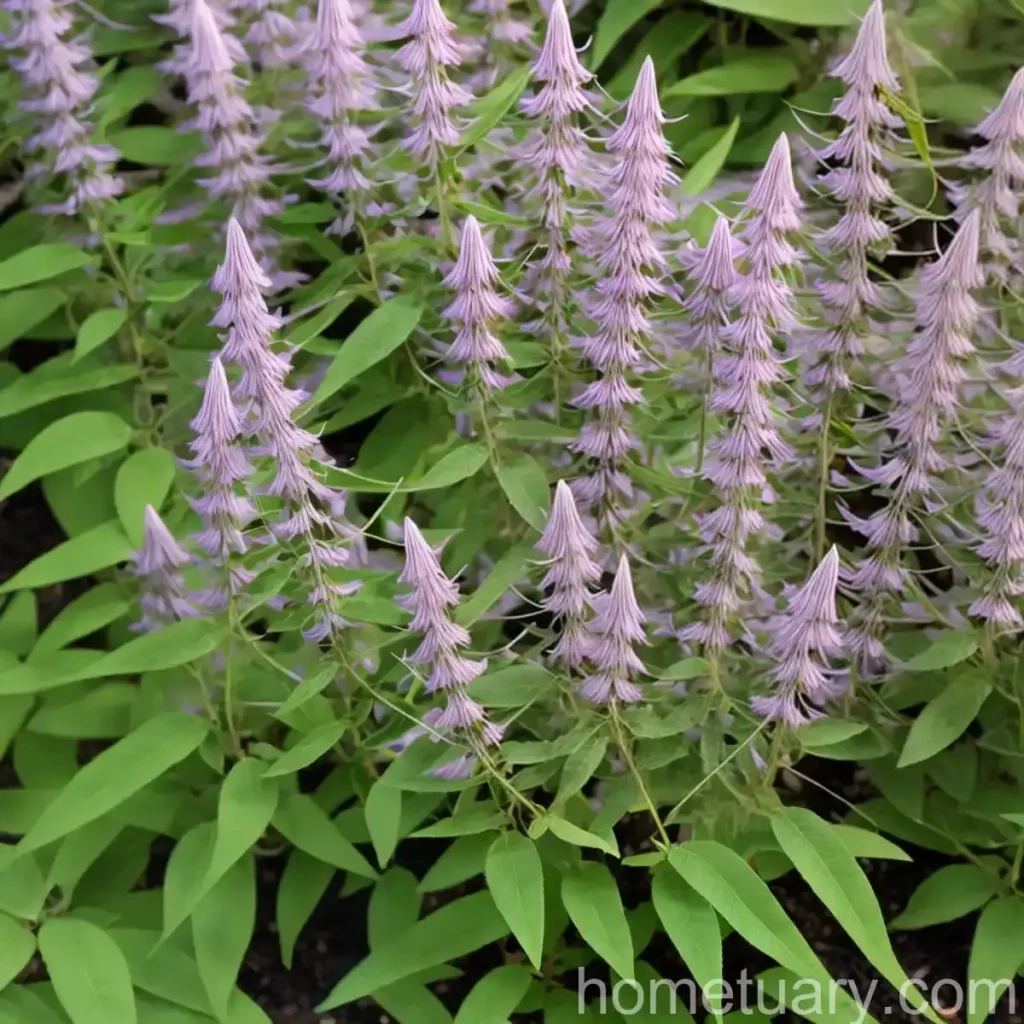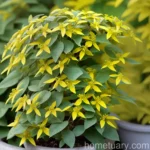Bush Clover (Lespedeza bicolor ‘Little Buddy’) Care Guide
Welcome to the ultimate guide on the care and cultivation of the bush clover, specifically the Lespedeza bicolor ‘Little Buddy’ variety. In this comprehensive guide, we will explore the various aspects of caring for this stunning plant. From its cultural requirements to propagation techniques, common diseases, and fun facts, this guide aims to provide all the information you need to cultivate and maintain healthy bush clover plants in your garden or landscape.
What is Bush Clover?
Before we delve into the specifics of caring for the Lespedeza bicolor ‘Little Buddy,’ let’s take a moment to understand what bush clover is and its significance in the world of plants. Bush clover is a member of the pea family (Fabaceae) and is known for its delicate, elongated clusters of flowers that adorn its branches. The Lespedeza bicolor ‘Little Buddy’ variety, in particular, is renowned for its compact growth habit and vibrant, pinkish-purple blooms, making it a popular choice for gardens and landscapes.
Key Takeaways – Bush Clover (Lespedeza bicolor ‘Little Buddy’)
- Scientific Name: Lespedeza bicolor ‘Little Buddy’
- Common Name: Bush Clover
- Plant Type: Perennial shrub
- Notable Feature: Compact growth and vibrant pinkish-purple flowers
- Cultural Uses: Ornamental, soil improvement, wildlife habitat
- Sunlight Needs: Full sun to partial shade
- Watering: Moderate, well-draining soil
- Soil Type: Well-draining, fertile soil
- Fertilization: Balanced, slow-release fertilizer
- Pruning: Annual rejuvenation pruning
- Propagation: Seeds, softwood cuttings
- Container Use: Suitable for containers
- Popularity: Popular for landscaping and native gardens
- Common Diseases: Powdery mildew, root rot
- Common Pests: Aphids, spider mites
With these key takeaways in mind, let’s explore the specific care requirements for the Lespedeza bicolor ‘Little Buddy’ and how you can ensure its health and vitality in your garden or landscape.
Bush Clover (Lespedeza bicolor ‘Little Buddy’) Care
Culture
Cultural practices play a crucial role in the health and development of bush clover plants. Understanding the ideal conditions for their growth is essential for ensuring robust and vibrant specimens.
Uses
The bush clover serves various cultural purposes, making it a versatile addition to gardens and landscapes. Its primary uses include:
- Ornamental: The vibrant and bountiful flowers of the Lespedeza bicolor ‘Little Buddy’ make it a stunning ornamental addition to any landscape, adding visual interest and a pop of color.
- Soil Improvement: As a member of the legume family, bush clover has the unique ability to fix nitrogen in the soil, thereby improving soil fertility and overall plant health.
- Wildlife Habitat: The nectar-rich flowers of bush clover attract pollinators such as bees and butterflies, making it a valuable addition to wildlife-friendly gardens.
Water
Appropriate watering is crucial for the health and vigor of bush clover plants. Understanding their water needs and implementing proper irrigation practices can contribute significantly to their overall well-being.
Sunlight
Bush clover thrives in well-lit environments, benefiting from full sun to partial shade exposure. Adequate sunlight is essential for robust growth and abundant flowering.
Fertilizer
To support the growth and blooming of Lespedeza bicolor ‘Little Buddy,’ balanced fertilization is necessary. The application of suitable fertilizers at the right time can enhance the plant’s health and flowering potential.
Soil
The soil composition and quality play a vital role in nurturing healthy bush clover plants. Understanding the soil requirements and making appropriate amendments can directly impact their growth and performance.
Pruning
Regular pruning is essential for maintaining the shape and vigor of bush clover plants. Proper pruning techniques and timing contribute to healthy growth and prolific flowering.
Propagation
The propagation of bush clover allows for the expansion of plantings and the preservation of desirable traits. Understanding the propagation methods and best practices is essential for successful reproduction.
Container
While bush clover is often grown in garden beds, it is also suitable for container cultivation, offering versatility in its placement and potential for urban and small-space gardening.
Common Diseases and Pests
Despite its overall resilience, bush clover is susceptible to certain diseases and pests. Recognizing the signs of common ailments and implementing appropriate management strategies is crucial for preserving the plant’s health and vitality.
Disease Diagnosis
Identifying and diagnosing diseases affecting bush clover plants is essential for implementing targeted treatment and prevention measures. Understanding the symptoms and causes of common diseases enables gardeners to take proactive measures in maintaining plant health.
Common Pests
Pest infestations can compromise the health and aesthetic appeal of bush clover. Recognizing common pests and implementing effective pest management strategies are vital for safeguarding the plants from potential damage.
Botanist’s Tips
As botanists, we can provide valuable insights and expert tips for the optimal care and cultivation of bush clover plants. Drawing from scientific knowledge and practical experience, these tips can empower gardeners to nurture thriving specimens in their own landscapes.
Fun Facts
In addition to its ornamental and ecological value, bush clover boasts fascinating characteristics and historical significance. Delving into these intriguing aspects sheds light on the plant’s unique attributes and cultural importance.
Links to External Resources
To supplement the information provided in this guide, here are some external resources for further exploration:
So, armed with the knowledge and insights gained from this comprehensive care guide, you are well-equipped to cultivate and care for the Lespedeza bicolor ‘Little Buddy,’ commonly known as the bush clover. By following the recommended practices and taking proactive measures for disease and pest management, you can ensure the health, beauty, and longevity of these remarkable plants in your landscape. Happy gardening!
References:
- USDA, NRCS. 2021. The PLANTS Database. National Plant Data Team, Greensboro, NC 27401-4901 USA. https://plants.sc.egov.usda.gov
- Dirr, M. A. (2009). Manual of Woody Landscape Plants: Their Identification, Ornamental Characteristics, Culture, Propagation and Uses. Stipes Publishing.















